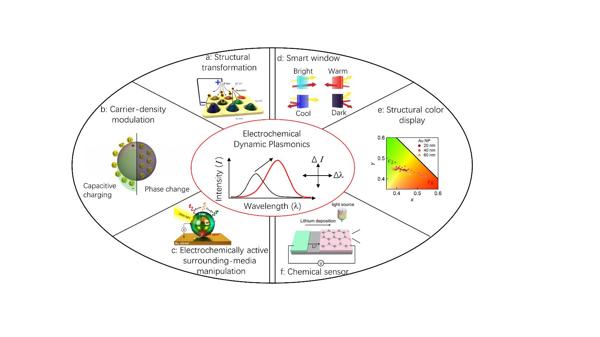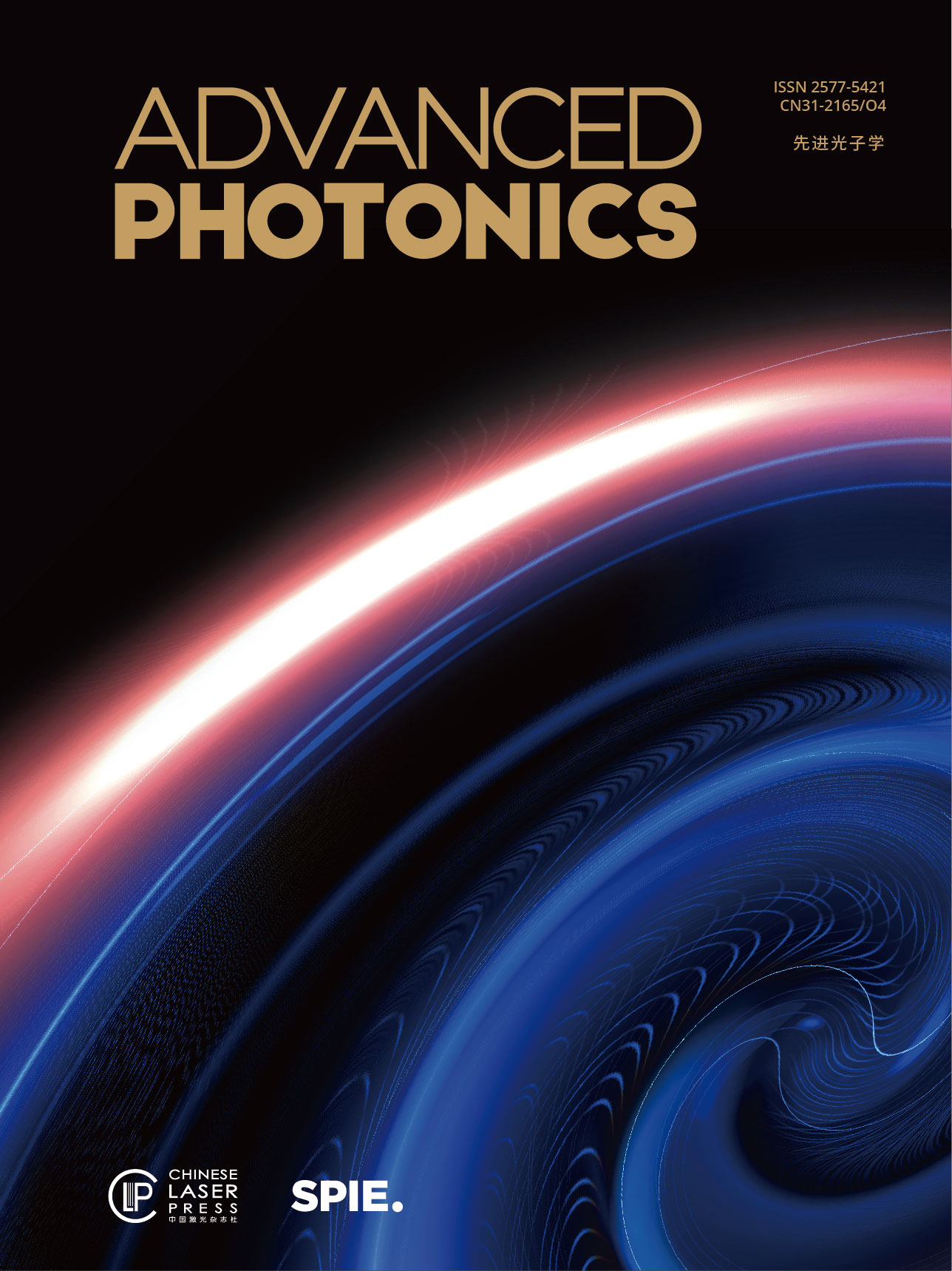Plasmonics, with the unique capability to confine and guide light at the nanoscale, are regarded as one of the main fields of photonics, attracting much interest in the community of physics, chemistry, and material science. However, most conventional plasmonic devices are passive with static microstructures and fixed optical properties, which can hardly meet all the real-time demand. Dynamic plasmonics are highly pursued because of the advantages of real-time active control capability of plasmonic resonances. Among versatile approaches for dynamic plasmonics, electrochemical redox reactions can enable dynamic plasmonics by regulating the microstructure, with the widespread potential applications, including smart windows, structural color displays and chemical sensors. Thus, electrochemical driven dynamic plasmonics become a promising and rapidly emerging research field in recent years.
Recently, researchers led by Prof. Lin Zhou and Prof. Jia Zhu from Nanjing University summarize the latest research progress of electrochemical related dynamic plasmonics, including approaches and applications. The work was published in Advanced Photonics, entitled "Electrochemical driven dynamic plasmonics".

Approaches (a-c) and applications (d-f) of electrochemical driven dynamic plasmonics.
There are three main approaches for dynamic plasmonics, including structural transformation, carrier-density modulation, and electrochemically active surrounding-media manipulation. The detailed theoretical designs, optical properties and physical mechanisms of each method are summarized in detail. For structural transformation, metal deposition/stripping during reduction/oxidation reactions and metal particle assembly/disassembly through voltage control can change the shape, size and distance of metal particles and thickness of metal films, leading to intensity and wavelength dependent spectroscopic manipulation. Carrier-density modulation achieved by the capacitive charging process through the electrochemical injection or extraction of electrons into or out of plasmonic materials (metal and transition metal oxide nanocrystal materials) leads to dynamic plamonics. Electrochemically active surrounding-media manipulation by ion insertion and redox reactions of polymers can change the effective refractive index of the compound plasmonic structures for dynamic plamonics. Among various electrochemical dynamic plasmonic strategies, there are both reversible and irreversible processes, some of which may involve phase transition while some may not. One can carefully employ the strategies with respect to the requirement of the target devices and/or applications.
Furthermore, three main applications of dynamic plasmonics are summarized, including smart windows, structural color displays, and electrochemical sensors. First, dynamic plasmonics realized by structural transformation and carrier-density regulation with reversible control of optical transmittance in the visible and near-infrared wavelength range can be applied for smart windows, with the advantages of high contrast, high reversibility and durability. Second, dynamic plasmonics realized by structural transformation and surrounding-media manipulation with the intensity and resonance wavelength control in the visible wavelength range can achieve structural color display with the advantage of high resolution. Third, the correlation between the structural parameters and the optical spectrum is the foundation to study the reaction mechanism of catalytic reactions, and trace chemical detection by tunable surface-enhanced Raman spectroscopy. Dynamic plasmonics can also be employed to explore the morphological evolution of the lithium metal electrode and detect lithium dendrites in the lithium metal batteries in a real-time manner, to improve the battery safety.
Despite the recent research progress of electrochemical driven dynamic plasmonics, there are still many challenges: including optimizing materials and microstructures, extending the degrees of freedom, broadening the optical window, and accelerating commercial applications.
In summary, this review summarizes the recent research progress and remaining challenges of electrochemical driven dynamic plasmonics. It also calls for more advancement in the development of effective approaches and electrochemical systems, potential optical mechanisms and stable optical properties, accelerating its commercialization in the future.


